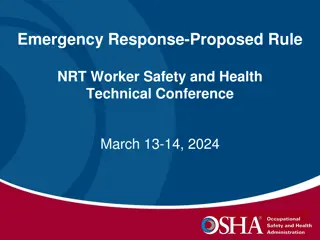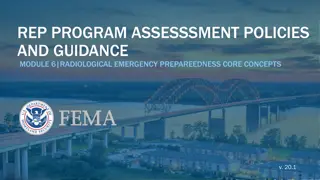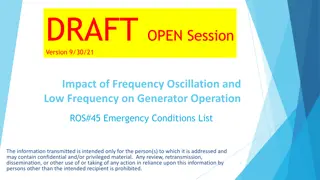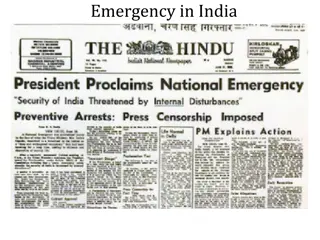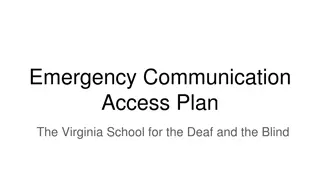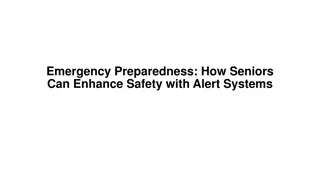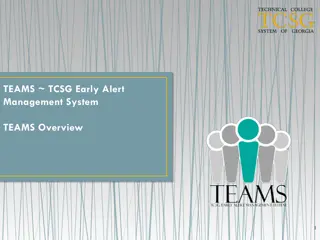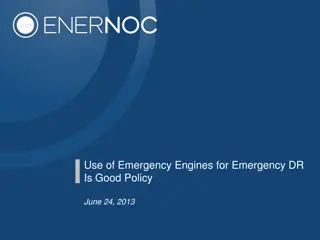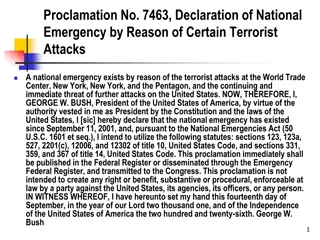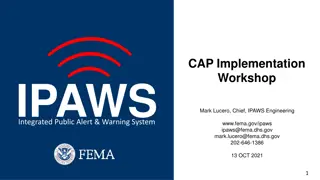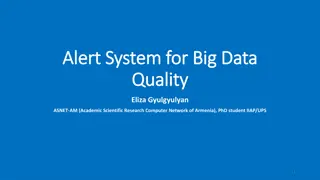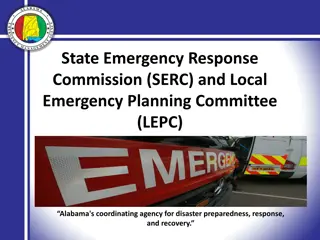Overview of Emergency Alert System (EAS)
The Emergency Alert System (EAS) is a national public warning system that enables broadcasters and providers to communicate critical information to the public during emergencies. It is utilized by various entities, including the President, state, and local authorities, for disseminating important alerts and information. The system plays a crucial role in ensuring public safety and preparedness.
Download Presentation

Please find below an Image/Link to download the presentation.
The content on the website is provided AS IS for your information and personal use only. It may not be sold, licensed, or shared on other websites without obtaining consent from the author.If you encounter any issues during the download, it is possible that the publisher has removed the file from their server.
You are allowed to download the files provided on this website for personal or commercial use, subject to the condition that they are used lawfully. All files are the property of their respective owners.
The content on the website is provided AS IS for your information and personal use only. It may not be sold, licensed, or shared on other websites without obtaining consent from the author.
E N D
Presentation Transcript
WHAT DOES EAC DO? The Emergency Alert System (EAS) is a national public warning system that requires broadcasters, cable television systems, wireless cable systems, satellite digital audio radio service (SDARS) providers, and direct broadcast satellite (DBS) providers to provide the communications capability to the President to address the American public during a national emergency. The system also may be used by state and local authorities to deliver important emergency information, such as AMBER alerts and weather information targeted to specific areas.
WHERE IS MY LOCAL EASOFFICE? HTTPS://WWW.FCC.GOV/PUBLIC-SAFETY-AND-HOMELAND-SECURITY/POLICY-AND-LICENSING- DIVISION/ALERTING/GENERAL/STATE-EAS-PLANS
WHEN WAS THE EMERGENCY BROADCAST SYSTEM ACTIVATED?
WHY ARE THERE FEES FOR EAS? Each year, as part of the passage of the federal budget, Congress establishes an amount that the FCC must collect in regulatory fees. This year that amount is $335.8 million. Based upon 47 U.S.C. 159, the FCC is obligated to collect this amount from every organization that benefits in any way from the FCC's enforcement, policy and rulemaking, user information, and international activities. The regulatory fee section of the law does not specifically exempt any group from paying this fee; although, it does allow the Commission to waive, reduce, or defer payment of a fee "for good cause shown, where such action would promote the public interest." The FCChas interpreted this to mean that regulatory fees will not be applied to state and local governments, amateur radio operator licensees (other than amateur vanity call signs), and non-profit organizations. The FCC also allows companies in precarious financial situations or bankruptcy to petition for a case-by-case decision on a waiver or reduction of the regulatory fee. REGULATORY FEE PAYMENT PAYMENT TYPE CODE $0.96 per subscriber 1571 Cable System Subscriber Fee, Including Example of fees IPTV Subscribers CARS License Direct Broadcast Satellite (DBS) $660 per license $0.12 per subscriber 1570 1592



